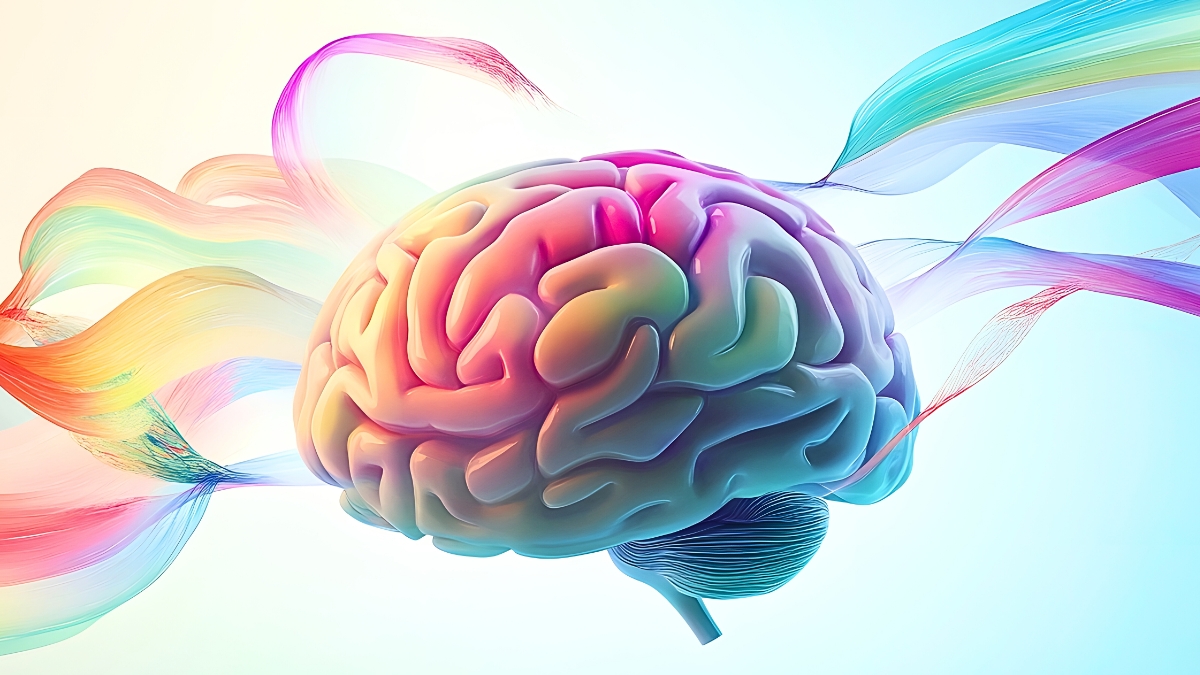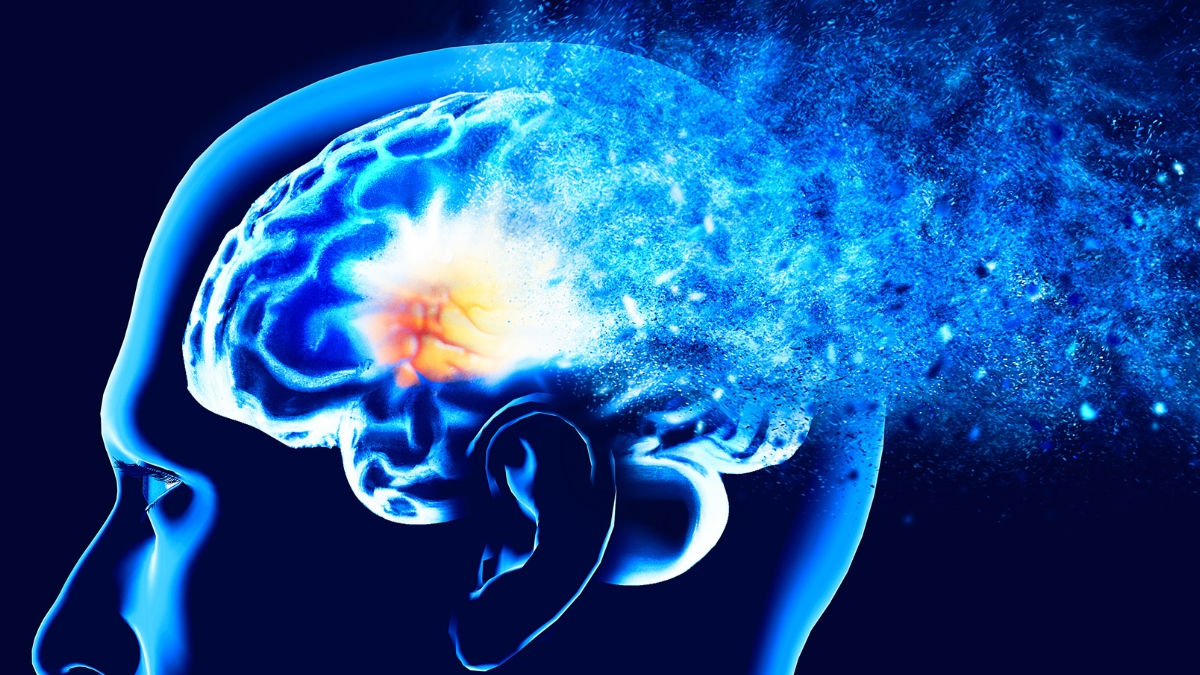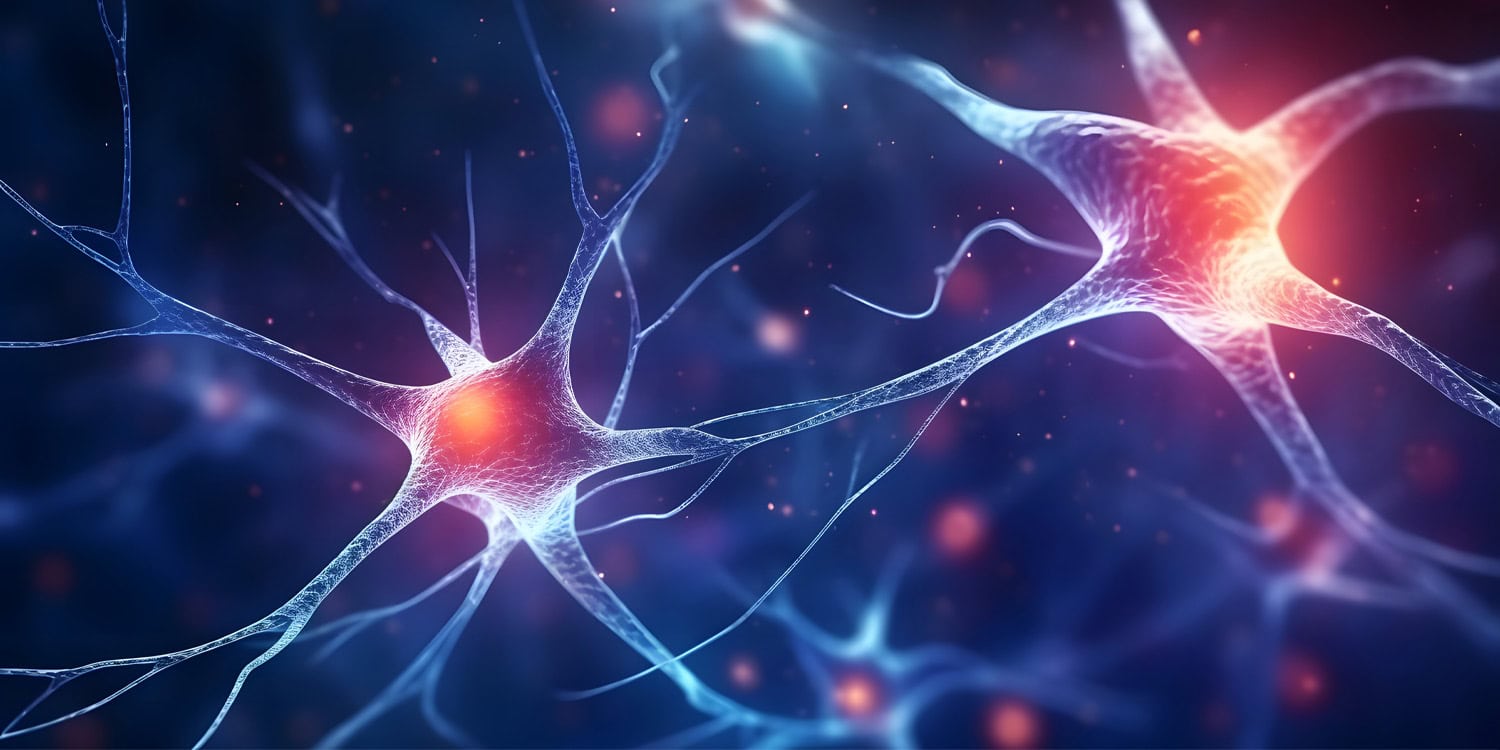Nvidia partners with South Korean government, companies to boost AI development

© Copyright 2025 The Associated Press. All rights reserved.

© Copyright 2025 The Associated Press. All rights reserved.
In the southern Idlib countryside, once a frontline in Syrian civil war, residents are trickling back to their villages after years in exile.

© Copyright 2025 The Associated Press. All rights reserved.
King removes brother’s titles and honours as Virginia Giuffre’s family declare ‘victory’

© AFP/Getty
The actor, who plays the lead detective in the seismically popular murder mystery spin-off, talks to Lydia Spencer-Elliott about homesickness, haters, and staying up all night to learn her script

© Getty Images for TV WEEK Logie A
Inspired by a near-death experience, Florence Welch conjures up a fantastic collection of songs that find her wrestling with her role as a performer, her status among ‘the greats’, and who she is at home, away from her devoted followers

© Press
Bermuda closed down its schools and ferries ahead of the storm’s impact on Thursday night

© Copyright 2025 The Associated Press. All rights reserved
Gareth Ward sentenced to almost six years in prison for raping a young man and sexually assaulting a teenager
© YouTube/The Project

© Copyright 2025 The Associated Press. All rights reserved.
We hear the term “hormone balancing” day in, day out, Instagram is awash with hormone balancing coaches and we’re constantly seeing products that claim to reinstate hormonal balance. But given that hormones are always in flux – due to the nature of them being hormones – what does the term “hormone balance” mean? TV doctor Dr Zoe Williams and nutritionist and author of Everything I Know About Hormones, Hannah Alderson discuss the balancing boom, supplements, healthy eating, the pill, menopause and more with podcast host Emilie Lavinia.

© The Independent

© Copyright 2025 The Associated Press. All rights reserved

© PA Wire

© Copyright 2025 The Associated Press. All rights reserved.

© Copyright 2025 The Associated Press. All rights reserved.
Prince Andrew has dropped his last remaining roles and titles amid a scandal that has lasted a decade

© PA Wire

© Copyright 2025 The Associated Press. All rights reserved
‘It is now time for the Republicans to play their ‘TRUMP CARD,’’ the president wrote on Truth Social

© AP

© Copyright 2025 The Associated Press. All rights reserved
Oct. 24-30, 2025

© Copyright 2025 The Associated Press. All rights reserved

© Copyright 2025 The Associated Press. All rights reserved

© Copyright 2025 The Associated Press. All rights reserved

© AP

© Copyright 2025 The Associated Press. All rights reserved

© Copyright 2025 The Associated Press. All rights reserved
The short but powerful storm broke records across the New York City area

© AP

© Copyright 2025 The Associated Press. All rights reserved

© AP
Neve Campbell is returning to the series after not appearing in ‘Scream VI’

© Getty Images
News of Moscow’s latest test comes days after Trump warned the US has a nuclear submarine off Russian shores

© Getty
 This discovery could play a valuable role in treatments.
This discovery could play a valuable role in treatments.
 Never-before-seen details, just in time for Halloween.
Never-before-seen details, just in time for Halloween.
Rick Hendrick and Joe Gibbs are rivals in NASCAR’s title fight, yet their friendship has become one of the sport’s most enduring stories.
© Icon Sportswire
Astons from 1929 to the present, including an F1 car, are there.

© Petersen Museum
112 years of history all laid out in a semi-circle.

© Petersen Museum

© Copyright 2025 The Associated Press. All rights reserved.
Alejandro Juarez, 39, was not given the opportunity to contest his deportation in front of an immigration judge – a legal entitlement for such detainees

© REUTERS

© AP Photo/Carolyn Kaster, File

© DANIEL MIHAILESCU/AFP via Getty Images

© Daily Express/Hulton Archive/Getty Images
Editorial: As The Independent reveals new details about the catastrophic Ministry of Defence data breach that may have exposed to the Taliban details of thousands of Afghans who helped UK forces, wider questions now need to be asked about the way officialdom deals with data
.png?width=1200&auto=webp&crop=3%3A2)
© The Independent

© Jacob King/PA Wire

© Copyright 2022 The Associated Press. All rights reserved

© Copyright 2025 The Associated Press. All rights reserved.
Trump went viral in 2019 after he placed a candy bar on a child’s Minion costume at the White House’s trick-or-treating event

© AP
New report reveals ‘heartbreaking’ stories of elderly patients left to languish in hospital corridors for hours as experts warn of ‘crisis in plain sight’

© Age UK
Exclusive: The government’s spending pledge to support local authorities in England amounts to a real-terms cut

© PA Archive

© Photo by PABLO VERA/AFP via Getty Images
Ofgem and Energy UK have a message for anyone who has moved house in the last five years

© PA
Sir Keir Starmer announced at the Nato summit in June that the UK would purchase 12 F-35A jets

© PA
Arthur Berryman was murdered in his home on October 31, 2001

© PSNI/PA Wire
There is a ‘dangerous culture of acceptance’ around substance misuse in prisons as almost four in 10 inmates admit it’s easy to get drugs, a report warns

© Getty
The retired plumber said he would have donated his kidney no matter the risk

© NHS Lothian/PA
Scales, best known for her role as Sybil in Fawlty Towers, died almost a year after her husband, Timothy West

© PA

© PA Wire

© Joe Raedle/Getty Images

© Copyright 2025. The Associated Press. All rights reserved

© Copyright 2025 The Associated Press. All rights reserved
A new study suggests that revealing the political affiliations of a newsroom’s journalists can influence public trust and engagement. The research, published in Communication Research, found that people report higher trust in news outlets they perceive as politically balanced or those that provide no political information about their staff, compared to outlets dominated by one party.
The motivation for this research stems from the steady decline of public trust in the news media within the United States. Scholars and journalists alike have been exploring ways to rebuild this confidence, with a particular focus on the concept of journalistic transparency. The idea is that by being more open about how news is gathered and produced, outlets can signal their honesty and integrity to the public. This openness can serve as a mental shortcut, or heuristic, that helps people decide whether a source is credible.
The researchers wanted to test a specific and rarely examined form of transparency: disclosing the collective political leanings of the journalists working at a news outlet. They sought to understand if this information would help or hinder trust and whether people’s own political identities would shape their reactions.
To investigate this question, the researchers conducted a series of three online experiments. In each experiment, participants were shown a brief description of a news outlet. They were then randomly assigned to see different versions of a graphic that displayed the political composition of that outlet’s newsroom. After viewing the description and graphic, participants answered questions designed to measure their trust in the outlet, their intention to use it for news in the future, and their intention to actively avoid it.
The first experiment focused on political ideology. Participants were shown information about a real news program, The National Desk, and were assigned to one of four conditions. One group received no information about the journalists’ politics, serving as a control. A second group was told the newsroom was perfectly balanced with an equal number of liberal and conservative journalists. The third and fourth groups were told the newsroom had a large majority of either liberal journalists or conservative journalists.
The results showed that participants had significantly higher trust in the outlet when it was presented as balanced or when no political information was provided. Correspondingly, they reported a greater willingness to use these outlets and a lower intention to avoid them. There was no meaningful difference in trust between the balanced outlet and the one with no political information disclosed.
This initial experiment also revealed a powerful pattern related to partisanship. Democrats and Republicans both expressed much lower trust in the outlet that was dominated by the opposing ideology. For example, Democrats rated the conservative-majority newsroom as far less trustworthy, while Republicans felt the same way about the liberal-majority newsroom. This points to a strong “out-group bias,” where people are quick to distrust a source associated with a political group they oppose.
However, the study did not find evidence of an “in-group favoritism.” Democrats did not trust the liberal-majority outlet any more than the balanced or unaffiliated one, and Republicans showed a similar lack of preference for the conservative-majority outlet.
The second experiment extended these ideas by focusing on party affiliation rather than general ideology. The design was similar, but this time the breakdown included Democrats, Republicans, and Independents. A fifth condition was added to test perceptions of a newsroom with a majority of Independent journalists.
The findings from this experiment closely mirrored the first. People reported the most trust in the outlets that were politically balanced, had a majority of Independents, or provided no partisan information at all. The outlets with a clear Democratic or Republican majority were trusted significantly less. Again, the pattern of out-group dislike was strong among both Democrats and Republicans, with no accompanying favoritism for their own party’s newsroom.
The third and final experiment was designed to confirm that these effects were not tied to the specific name of the news program used in the first two studies. The researchers replicated the second experiment’s design but used a fictional news organization called the Independent News Network, a name pre-tested to be seen as neutral.
The results were consistent for a third time. This replication strengthens the conclusion that it is the information about the political composition of the newsroom, not a pre-existing perception of an outlet’s brand, that drives these judgments about trust. The studies also consistently showed that trust acted as the key mechanism. When people perceived an outlet as less trustworthy because of its partisan slant, that decrease in trust directly led to their intentions to avoid the outlet and not use it in the future.
The researchers note some limitations to their work. The studies presented a hypothetical situation, as news organizations do not typically publicize the partisan breakdown of their staff, which means the experiments may not perfectly reflect real-world behavior. The study also measured general perceptions of an outlet without providing participants with any specific news articles, and people’s reactions might change depending on the topic of the news.
Future research could explore whether these findings hold when applied to well-known media brands, which people already have strong opinions about. It could also examine how people react to specific news stories when they are aware of the political leanings of the newsroom that produced them.
The study, “In Diversity We Trust? Examining the Effect of Political Newsroom Diversity on Media Trust, Use, and Avoidance,” was authored by Eliana DuBosar, Jay D. Hmielowski, and Muhammad Ehab Rasul.

 "This is the first time any intervention, drug or non-drug, has been shown to do that in humans."
"This is the first time any intervention, drug or non-drug, has been shown to do that in humans."
 This odd jelly-donut world between Jupiter and Uranus is wild.
This odd jelly-donut world between Jupiter and Uranus is wild.
 It potentially affects hundreds of thousands of people.
It potentially affects hundreds of thousands of people.
NASCAR Craftsman Truck Series Championship 4 driver ready to claim his first title for his third team this campaign.
© Meg Oliphant

© Jordan Strauss/Invision/AP

© AP
Tate, a British-American influencer, is due to fight TV personality Chase DeMoor, 29, in Dubai on 20 December.

© Getty Images
King, who has fronted the broadcaster’s morning show for over a decade, is expected to step down from her anchor role on next year, according to a report

© AFP via Getty Images
Disgraced royal will live as a commoner on the Sandringham estate in Norfolk

© PA Archive

© Copyright 2019 The Associated Press. All rights reserved
The Airbus 320 was heading to Newark Liberty International Airport from Cancun International Airport Thursday when it was forced to divert to Tampa, Florida

© Getty Images
‘They’ve been predicting we would fold, and we would be predicting they would find a backbone,’ one Democrat says

© AP

© J. Riccardo Benavides

© Police Scotland/PA Wire
Andrew is set to move to Sandringham Estate in Norfolk after being evicted from his Windsor mansion

© PA

© Monroe County Sheriff's Office
Watch the moment Alan Carr bursts out laughing when he is asked to call himself a Faithful in the latest episode of The Celebrity Traitors.

© BBC
Watch Alan Carr’s hilarious performance in the latest The Celebrity Traitors challenge, as he carries a mannequin version of his own head across a laser beam room.

© BBC
Jesse Eisenberg has revealed that he is donating a kidney to a stranger in six weeks, stating that he is “so excited”.

© Today Show
As a certified running coach, I know what to look for in a great pair of socks

© Jennifer Heimlich/The Independent

© ASSOCIATED PRESS

© Copyright 2025 The Associated Press. All rights reserved.
From viral toners to popular SPFs, these K-beauty heroes will be your next game-changers

© Ava Welsing-Kitcher/The Independent
The documentary Finding Harmony: A King’s Vision is due for release in 2026

© The King’s Foundation/PA
‘Conservatives should feel no obligation to reflexively support any foreign government, no matter how loud the pressure becomes from the globalist class or from their mouthpieces in Washington,’ said Heritage Foundation president Kevin Roberts

© AFP via Getty Images

© Harry How/Getty Images
The contamination has been traced to precooked pasta from Nate's Fine Foods of Roseville, California

© U.S. Agriculture Department
Some Econoline vans have inoperative defrosting systems

© Copyright 2025 The Associated Press. All rights reserved

© Copyright 2025 The Associated Press. All rights reserved.
White House issues major overhaul of refugee admission policy to primarily admit Afrikaners

© AFP via Getty Images
Some pages claim their sites are ‘undergoing maintenance’ or are – fittingly – under construction, while others have tampered down their social and online presence

© Getty
More than 2,000 people are reported to have been killed in two days

© AP

© Copyright 2020 The Associated Press. All rights reserved

© Copyright 2025 The Associated Press. All rights reserved.

© Chicago Sun-Times
Watch live as president Donald Trump and first lady Melania Trump host the White House’s annual Halloween event.

© Copyright 2020 The Associated Press. All rights reserved.

© Copyright 2025 The Associated Press. All rights reserved.
Murray starred in the 1993 Halloween family classic as Thackery Binx

© Getty Images

© Copyright 2025 The Associated Press. All rights reserved
HuffPost reportedly saw an increase in revenue following the ‘your mom’ debacle

© Getty Images

© NASA/European Space Agency
An American Love Island star was left shocked when she received a £1,200 bill just days after moving to the UK.

© Toni Laites
Neville, who started out as a property developer during his playing career, will return to the show as a guest dragon

© Mike Egerton/PA Wire
Suzanne Rogers has been on ‘Days of Our Lives’ for 52 years

© Getty Images

© ASSOCIATED PRESS

© Lockheed Martin Corporation 2025

© Copyright 2025 The Associated Press. All rights reserved

© Adam Gray/Getty Images
The Metropolitan Police are ‘actively looking’ into claims that the royal tried to use his bodyguard to smear his accuser Virginia Giuffre – as her family urged the force to reopen an inquiry into her alleged abuse

© Reuters
A new study published in the journal Psychology of Aesthetics, Creativity, and the Arts suggests that individuals with a combination of high narcissism and psychological insecurity are more likely to be “cultural omnivores,” consuming both highbrow and lowbrow art forms. This behavior appears to be a strategy to satisfy two distinct psychological needs: signaling social status and projecting a sense of personal integrity.
Narcissism is often understood as a personality trait characterized by a grandiose sense of self, a persistent need for admiration, and a focus on one’s own importance. While this may project an image of supreme confidence, psychological research has shown that narcissism can exist alongside deep-seated feelings of insecurity, such as low self-esteem or a sense that one is not living as their “true self.” It is this particular combination of traits that interested the researchers.
Traditionally, cultural taste was seen through the lens of social class. Sociologists argued that elites used their preference for “highbrow” culture, like classical music and fine art, to distinguish themselves from other social classes. In recent decades, however, this pattern has shifted. Observers have noted the rise of the “cultural omnivore,” an individual who appreciates both high-status cultural products and more popular, “lowbrow” forms like pop music or street art.
The study’s authors proposed that this modern trend might be explained not just by social class, but by specific personality dynamics. They hypothesized that people high in narcissism but low in self-security might use cultural consumption as a tool. Liking highbrow culture could serve their need to signal superior status, while an appreciation for lowbrow culture, often seen as more authentic, could help soothe their inner feelings of inauthenticity.
To investigate this idea, the researchers conducted two separate studies. In the first experiment, they surveyed 178 university students. Participants completed questionnaires designed to measure their levels of narcissism and self-esteem. They were then asked to rate how likely they would be to participate in a variety of cultural activities.
Some of these activities were classified as highbrow, including attending a classical symphony or visiting art galleries. Others were categorized as lowbrow, such as going to pop concerts or viewing graffiti and street art. The researchers analyzed the data to see if there was a connection between the participants’ personality scores and their cultural intentions.
The findings revealed a distinct pattern. For individuals who scored high on the narcissism scale, having lower self-esteem was associated with a stronger intention to participate in highbrow cultural activities. A similar relationship appeared for lowbrow culture. The participants with high narcissism and low self-esteem also expressed a greater interest in lowbrow activities.
This confirmed that the insecure narcissist profile was linked to being a cultural omnivore, showing an appetite for both ends of the cultural spectrum. The analysis also suggested that this behavior was connected to a general motivation for “distinction seeking,” or a desire to establish a unique and notable identity through their choices. This relationship held even when the researchers accounted for other factors, like a person’s openness to new experiences or their own perception of their social status.
The second study was designed to explore the specific motivations behind these dual preferences. The researchers wanted to confirm if status seeking was driving the interest in highbrow culture, while a need for integrity was behind the preference for lowbrow culture. This experiment involved 144 university students and used a slightly different approach.
Instead of measuring general self-esteem, the researchers measured a more specific form of insecurity known as self-alienation, which is the feeling of being out of touch with one’s true self. They also focused on a particular aspect of narcissism related to superiority and arrogance. Participants were then randomly assigned to read a biography of a fictional artist.
One version of the biography presented the artist as highbrow, noting that her paintings were exhibited in major museums around the world. The other version framed her as lowbrow, explaining that her work was given to family and friends before being discovered by an art dealer in her hometown. After reading one of the biographies, participants rated their interest in seeing the artist’s work. They also answered questions about their current motivations, including their desire to signal status and their need to project self-integrity.
The results of this experiment provided clearer support for the researchers’ hypothesis. Among participants who read about the highbrow artist, those with the insecure narcissist profile showed greater interest in her work. This increased interest was statistically linked to a heightened desire for status at that moment. Consuming high-status art appeared to satisfy their need to be seen as having high status.
For the participants who read about the lowbrow artist, a different motivation was at play. In this case, the insecure narcissist group’s interest in the art was connected to their desire to signal self-integrity. The perceived authenticity of the lowbrow artist seemed to offer a way for these individuals to bolster their own shaky sense of self. The two studies together paint a nuanced picture of how personality can shape cultural tastes.
This research provides a new psychological perspective on a phenomenon that has largely been studied through a sociological framework. It suggests that for some people, the choice of what art to consume is not merely a matter of taste but a complex strategy for managing their identity and internal insecurities.
The authors note that their findings are based on statistical associations, and future research could explore these mechanisms further. For instance, an experiment could temporarily change a person’s feelings of security to see if it directly affects their cultural preferences. Researchers could also examine whether this pattern of behavior extends to other domains, such as luxury consumption, social media use, or even charitable giving.
The study, “How Insecure Narcissists Become Cultural Omnivores: Consuming Highbrow Culture for Status Seeking and Lowbrow Culture for Integrity Signaling,” was authored by Hanna Shin and Nara Youn.

A new study has found that a robot’s feedback during a collaborative task can influence the feeling of closeness between the human participants. The research, published in Computers in Human Behavior, indicates that this effect changes depending on the robot’s appearance and how it communicates.
As robots become more integrated into workplaces and homes, they are often designed to assist with decision-making. While much research has focused on how robots affect the quality of a group’s decisions, less is known about how a robot’s presence might alter the personal relationships between the humans on the team. The researchers sought to understand this dynamic by exploring how a robot’s agreement or disagreement impacts the sense of interpersonal connection people feel.
“Given the rise of large language models in recent years, we believe robots of different forms will soon be equipped with non-scripted verbal language to help people make decisions in various contexts. We conducted our research to call for careful consideration and control over the precise behaviors robots should use to provide feedback in the future,” said study author Ting-Han Lin, a computer science PhD student at the University of Chicago.
The investigation centered on two established psychological ideas. One, known as Balance Theory, suggests that people feel more positive toward one another when they are treated similarly by a third party, even if that treatment is negative. The other concept, the Influence of Negative Affect, proposes that a negative tone or criticism can damage the general atmosphere of an interaction and harm relationships.
To test these ideas, the researchers conducted two separate experiments, each involving pairs of participants who did not know each other. In both experiments, the pairs worked together to answer a series of eight personal questions, such as “What is the most important factor contributing to a life well-lived?” For each question, participants first gave their own individual answers before discussing and agreeing on a joint response.
A robot was present to mediate the task. After each person gave their initial answer, the robot would provide feedback. This feedback varied in two ways. First was its positivity, meaning the robot would either agree or disagree with the person’s statement. Second was its treatment of the pair, meaning the robot would either treat both people equally (agreeing with both or disagreeing with both) or unequally (agreeing with one and disagreeing with the other).
The first experiment involved 172 participants interacting with a highly human-like robot named NAO. This robot could speak, use gestures like nodding or shaking its head, and employed artificial intelligence to summarize a person’s response before giving its feedback. Its verbal disagreements were designed to grow in intensity, beginning with mild phrases and ending with statements like, “I am fundamentally opposed with your viewpoint.”
The results from this experiment showed that the positivity of the robot’s feedback had a strong effect on the participants’ relationship. When the NAO robot gave positive feedback, the two human participants reported feeling closer to each other. When the robot consistently gave negative feedback, the participants felt more distant from one another.
“A robot’s feedback to two people in a decision-making task can shape their closeness,” Lin told PsyPost.
This outcome supports the theory regarding the influence of negative affect. The robot’s consistent negativity seemed to create a less pleasant social environment, which in turn reduced the feeling of connection between the two people. The robot’s treatment of the pair, whether equal or unequal, did not appear to be the primary factor shaping their closeness in this context. Participants also rated the human-like robot as warmer and more competent when it was positive, though they found it more discomforting when it treated them unequally.
The second experiment involved 150 participants and a robot with a very low degree of human-like features. This robot resembled a simple, articulated lamp and could not speak. It communicated its feedback exclusively through minimal gestures, such as nodding for agreement or shaking its head from side to side for disagreement.
With this less-human robot, the findings were quite different. The main factor influencing interpersonal closeness was the robot’s treatment of the pair. When the robot treated both participants equally, they reported feeling closer to each other, regardless of whether the feedback was positive or negative. Unequal treatment, where the robot agreed with one person and disagreed with the other, led to a greater sense of distance between them.
This result aligns well with Balance Theory. The shared experience of being treated the same by the robot, either through mutual agreement or mutual disagreement, seemed to create a bond. The researchers also noted a surprising finding. When the lamp-like robot disagreed with both participants, they felt even closer than when it agreed with both, suggesting that the robot became a “common enemy” that united them.
“Heider’s Balance Theory dominates when a low anthropomorphism robot is present,” Lin said.
The researchers propose that the different outcomes are likely due to the intensity of the feedback delivered by each robot. The human-like NAO robot’s use of personalized speech and strong verbal disagreement was potent enough to create a negative atmosphere that overshadowed other social dynamics. Its criticism was taken more seriously, and its negativity was powerful enough to harm the human-human connection.
“The influence of negative affect prevails when a high anthropomorphism robot exists,” Lin said.
In contrast, the simple, non-verbal gestures of the lamp-like robot were not as intense. Because its disagreement was less personal and less powerful, it did not poison the overall interaction. This allowed the more subtle effects of balanced versus imbalanced treatment to become the main influence on the participants’ relationship. Interviews with participants supported this idea, as people interacting with the machine-like robot often noted that they did not take its opinions as seriously.
Across both experiments, the robot’s feedback did not significantly alter how the final joint decisions were made. Participants tended to incorporate each other’s ideas fairly evenly, regardless of the robot’s expressed opinion. This suggests the robot’s influence was more on the social and emotional level than on the practical outcome of the decision-making task.
The study has some limitations, including the fact that the two experiments were conducted in different countries with different participant populations. The first experiment used a diverse group of museum visitors in the United States, while the second involved university students in Israel. Future research could explore these dynamics in more varied contexts.
The study, “The impact of a robot’s agreement (or disagreement) on human-human interpersonal closeness in a two-person decision-making task,” was authored by Ting-Han Lin, Yuval Rubin Kopelman, Madeline Busse, Sarah Sebo, and Hadas Erel.





© IMAGN IMAGES via Reuters Connect

© AP Photo/Damian Dovarganes
America’s evangelical Christian community was a strong supporter of the apartheid regime in South Africa

© Getty Images

© Copyright 2010 The Associated Press. All rights reserved.
It comes after weeks of pressure to act over Andrew's relationship with sex offender Jeffrey Epstein

© PA Wire
The joint survey by ABC News, Ipsos and The Washington Post found that 56 percent of Americans oppose Trump’s demolition ballroom plan
.jpg?width=1200&auto=webp&crop=3%3A2)
© Getty Images
Topic has been working out throughout the process and didn’t want the diagnosis revealed until after he started treatment

© AP Photo/Mic Smith
Investigators believe the remains were likely dumped by a commercial funeral home business

© KLAS
EXCLUSIVE: Multiple sources told The Independent that senior foreign correspondent Debora Patta was added to the layoff list following a last-minute change by editor-in-chief Bari Weiss.

© Copyright 2018 The Associated Press. All rights reserved.
Starmer says chancellor will face no further action over failure to obtain rental licence

© screengrab
The Court of Arbitration for Sport upheld the World Athetics sanction

© Getty Images
The singer will appear on the show on Sunday night as part of its Halloween week

© BBC
The right-wing firebrand congresswoman will go on the liberal-leaning ABC talk show to chat about the government shutdown and push for release of the Epstein files as her break with House GOP leadership deepens

© Getty Images

© Copyright 2025 The Associated Press. All rights reserved

© Copyright 2020 The Associated Press. All rights reserved.
Late monarch’s middle child has seen his reputation damaged over his friendship with paedophile Jeffrey Epstein and a car crash BBC interview

© Getty
Even how to write ‘6-7’ is up for debate — is it ‘6 7’ or ‘six seven?’

© Getty Images
Residents in Anchorage, Alaska’s most populous city, reported feeling shaking

© Getty/iStock

© POOL/AFP via Getty Images
A private helicopter on its way to Lobuche near the Everest Base Camp to rescue stranded trekkers crashed on Wednesday (29 October), Civil Aviation Authority of Nepal spokesperson Gyanendra Bhul said.

© National Geographic
Tshikundi Taty, 44, allegedly dressed in a wig and female clothing in order to access the locker room and film other gym members, before ditching his disguise and fleeing the scene

© Montgomery Police Department
Mark Walter’s purchase of the Lakers ends the Buss family’s 46-year reign as majority owner

© AP
Peter Berg and Taylor Sheridan will co-write the script and produce together, with Berg directing

© Activision
The recall has potential to affect hundreds of thousands of patients

© AFP via Getty Images
Eubank Jr and Benn delivered one of the fights of the year in April. Now, with the pair set to clash again, Eubank Jr is leaving nothing to chance, as Harry Bullmore discovers

© AP

© Getty Images
Lithuania says the balloons are sent by smugglers transporting contraband cigarettes

© State Border Guard Service via AP
The world champion had to withdraw from Wednesday’s tournament in Wigan after arriving late due to traffic


© Copyright 2025 The Associated Press. All rights reserved

© Copyright 2025 The Associated Press. All rights reserved.
De Niro’s 19-year-old grandson, Leandro, died in 2023 after being sold fentanyl-laced pills

© Drena De Niro/Instagram/Getty
Jemimah Rodrigues smashed an unbeaten 127 to secure India a sensational five-wicket victory in the second semi-final

© Getty Images

© Theo Wargo/Getty Images for Film at Lincoln Center
Tens of thousands of ultra-Orthodox men filled downtown Jerusalem in protest against plans to draft them into Israel’s military, creating a sea of black-clad demonstrators who sang, clapped, and carried signs vowing jail over enlistment. The protest shut down the city, halted public transport and closed major roads.

© Copyright 2025 The Associated Press. All rights reserved

© Illinois State Police

© Copyright 2022 The Associated Press. All rights reserved.

© Jamie McCarthy/Getty Images for SiriusXM

© Chinatopix
Exclusive: Mariko Hosoi, 76, claims she was badly hurt after stepping off the escalator Donald Trump famously descended to announce his 2016 campaign

© Getty Images
The theft was conducted by two employees and a contractor over the span of several years

© Getty Images

© Copyright 2025 The Associated Press. All rights reserved.
Autism affects children regardless of race, ethnicity or income level

© Getty Images

© Nathan Howard/Pool via REUTERS

© Scott Olson/Getty Images
Wardley stopped Joseph Parker in the 11th round to become the WBO interim heavyweight champion and the mandatory challenger to the undisputed king

© PA Archive

© Joe Raedle/Getty Images

© Copyright 2025 The Associated Press. All rights reserved.
The building, as big as Vatican City with a collection larger than the Louvre, has been in the making for over 30 years and is finally set to formally open in November, Maira Butt writes

© Jack Lawes
Some trick-or-treaters will have to add an umbrella to their spooky costume

© REUTERS
Trump’s command risks a global arms race while the Doomsday clock ticks closer than ever to midnight, experts say

© AP
Spalletti won Serie A with Napoli in 2023 before joining the Italy setup

© AP
The Australian singer says he did nothing illegal

© Getty Images
Even shortlisted towns will receive £60,000 to help deliver their full bids

© Getty/iStock
England’s rugby union side take on the Wallabies at Twickenham just weeks before cricket’s biggest Test series begins

© Getty Images

© PA Archive
Exclusive: ‘Positioning’ cruises from Greece to Saudi Arabia are selling strongly

© Celestyal Cruises

© Copyright 2025 The Associated Press. All rights reserved.

© Invision
The 2025 F1 season heads into the final stretch as both McLaren drivers and Max Verstappen fight for the title

© AP
The new skeleton is dubbed ‘Dueling Dinosaurs’ because it was found intertwined with the bones of a Triceratops

© AP
A man who spiked women’s drinks in a nightclub before raping and sexually assaulting them was caught on CCTV.

© Police Scotland/PA Wire
At fraction of the cost of other models, it’s ideal for tackling mould and damp in small spaces

© Joanne Lewsley/The Independent

© Henrik Lenkeit / Facebook
The cases of Italian Parsley were sent to wholesalers in eight states

© Getty/iStock

© ASSOCIATED PRESS
One in five American adults are living with a mental illness

© Getty Images/iStock

© Avon and Somerset Police
Las Vegas tourism fell sharply this summer, with visitors down 11 percent in June and 6.7 percent in August year-over-year
.png?width=1200&auto=webp&crop=3%3A2)
© Getty Images
Watch as Queen Camilla receives paintings of her beloved rescue dogs by a local artist, thanking them for their “lovely” work.

© PA

© 2020 Invision
A new hotel resort is opening up on the pier and Mr. Resetti will help you clean up your island after years of neglect

© Nintendo

© ASSOCIATED PRESS
Heinrich Himmler was the head of the infamous SS and the architect of the Holocaust

© Getty Images
Roda Osman, 35, will spend 90 days in prison and 10 years on probation for theft after she spent $42,000 she fraudulently raised when claiming a man she rejected threw a brick at her head

© GoFundMe

© PA Archive
‘Isn’t [the truth] wonderful enough?’ asks TV astronomer Brian Cox

© NOIRLab
Noem was ‘living for free’, Washington Post reports, as top Trump advisers scoop up homes meant for military commanders, citing security concerns

© Getty Images
Scholes apparently had a big-money offer on the table from Inter Milan in 2000

© GETTY IMAGES
Miles Taylor offers frank assessment of Donald Trump’s alleged indifference as more than 41 million Americans set to go without food stamps because of unresolved government shutdown

© Getty


© J Studios | Getty Images


© Bloomberg | Getty Images


© Courtesy of Chirp


© sankai | Getty Images


© tolgart/Getty | Entrepreneur


© Leo Zevin


© nuthawut somsuk | Getty Images
Recent research provides new insight into the functions of common sexual behaviors, revealing how they contribute not just to physical pleasure but also to emotional bonding. A trio of studies, two published in the WebLog Journal of Reproductive Medicine and one in the International Journal of Clinical Research and Reports, examines the physiological and psychological dimensions of why men hold their partners’ legs and stimulate their breasts, what men gain from these acts, and how women experience them.
Researchers pursued these lines of inquiry because many frequently practiced sexual behaviors remain scientifically underexplored. While practices like a man holding a woman’s legs or performing oral breast stimulation are common, the specific reasons for their prevalence and their effects on both partners were not fully understood from an integrated perspective. The scientific motivation was to create a more comprehensive picture that combines biology, psychology, and social factors to explain what happens during these intimate moments.
“Human sexual behavior is often discussed socially, but many aspects of it lack meaningful scientific exploration,” said study author Rehan Haider of the University of Karachi. “We noticed a gap connecting physiological responses, evolutionary psychology, and relationship intimacy to why certain tactile behaviors are preferred during intercourse. Our goal was to examine these mechanisms in a respectful, evidence-based manner rather than rely on anecdote or cultural assumptions.”
The first study took a broad, mixed-methods approach to understand why men often hold women’s legs and engage in breast stimulation during intercourse. The researchers combined a review of existing literature with observational studies and self-reported surveys from adult heterosexual couples aged 18 to 50. This allowed them to assemble a model that connected male behaviors with female responses and relational outcomes.
The research team reported that 68 percent of couples practiced leg holding during intercourse. This position was found to facilitate deeper vaginal penetration and improve the alignment of the bodies, which in turn enhanced stimulation of sensitive areas like the clitoris and G-spot. Women in the study correlated this act with higher levels of sexual satisfaction.
The research also affirmed the significance of breast stimulation, noting that manual stimulation occurred in 60 percent of encounters and oral stimulation in 54 percent. This contact activates sensory pathways in the nipple-areolar complex, promoting the release of the hormones oxytocin and prolactin, which are associated with increased sexual arousal and emotional bonding. From a psychological standpoint, these behaviors appeared to reinforce feelings of intimacy, trust, and connection between partners.
“We were surprised by the consistency of emotional feedback among participants, particularly how strongly feelings of closeness and security were linked to these behaviors,” Haider told PsyPost. “It suggests an underestimated psychological component beyond pure physical stimulation.”
“The core message is that sexual touch preferences are not random—many are supported by biological reward pathways, emotional bonding hormones, and evolutionary reproductive strategies. Leg-holding and breast stimulation, for example, can enhance feelings of safety, intimacy, and arousal for both partners. Healthy communication and consent around such behaviors strengthen relational satisfaction.”
A second, complementary study focused specifically on the male experience of performing oral stimulation on a partner’s nipples. The goal was to understand the pleasure and psychological satisfaction men themselves derive from this act. To do this, researchers conducted a cross-sectional survey, recruiting 500 heterosexual men between the ages of 18 and 55. Participants completed a structured and anonymous questionnaire designed to measure the frequency of the behavior, their self-rated level of arousal from it, and its association with feelings of intimacy and overall sexual satisfaction.
The analysis of this survey data revealed a strong positive association between the frequency of performing nipple stimulation and a man’s own sense of sexual fulfillment and relational closeness. The results indicated that men do not engage in this behavior solely for their partner’s benefit. They reported finding the act to be both highly erotic and emotionally gratifying. The researchers propose that the behavior serves a dual function for men, simultaneously enhancing their personal arousal while reinforcing the psychological bond with their partner, likely through mechanisms linked to the hormone oxytocin, which plays a role in social affiliation and trust.
The third study shifted the focus to the female perspective, examining women’s physical and psychological responses to breast and nipple stimulation during penetrative intercourse. This investigation used a clinical and observational design, collecting data from 120 sexually active women aged 21 to 50. The methodology involved structured interviews, clinical feedback from counseling sessions, and the use of validated questionnaires, including the well-established Female Sexual Function Index (`FSFI`), a self-report tool used to assess key dimensions of female sexual function.
This research confirmed that stimulation of the breasts and nipples consistently contributed to a more positive sexual experience for women. Women with higher reported nipple sensitivity showed significantly better scores across the FSFI domains of arousal, orgasm, and satisfaction. Physically, this type of stimulation was associated with enhanced vaginal lubrication and clitoral responsiveness during intercourse.
Psychologically, the researchers found a connection between a woman’s perception of her breasts and her emotional experience. Women who described their breasts as “zones of intimacy” or “trust-enhancing touchpoints” reported a greater sense of emotional connection and reduced anxiety during sex. However, the study also identified that 23 percent of participants experienced discomfort during breast stimulation.
“This research does not imply that these behaviors are necessary or universally preferred,” Haider noted. “It’s also not about objectification. Rather, it focuses on how touch patterns can reinforce mutual trust, pleasure, and bonding when consensual and respectful. Not everyone will experience the same responses, and preferences vary widely. The study highlights trends—not prescriptions—and should be interpreted as an invitation for communication rather than a standard everyone must follow.”
While these studies offer a more detailed understanding of sexual behavior, the researchers acknowledge certain limitations. All three studies relied heavily on self-reported data, which can be influenced by memory recall and social desirability biases. The research was also primarily cross-sectional, capturing a snapshot in time, which can identify associations but cannot establish cause-and-effect relationships. For instance, it is unclear if frequent breast stimulation leads to higher intimacy or if more intimate couples simply engage in the behavior more often.
For future research, scientists suggest incorporating longitudinal designs that follow couples over an extended period to better understand the development of these behavioral patterns and their long-term effects on relationship satisfaction. There is also a need for more cross-cultural comparisons, as sexual scripts and preferences can vary significantly across different societies.
“Future work will explore female perspectives more deeply, neuroendocrine changes during different types of touch, and how cultural factors shape sexual comfort and preference,” Haider said. We’d like to compare findings across age groups and relationship durations as well. Sexual well-being is an important aspect of overall health, but it is rarely discussed scientifically. By approaching these topics with sensitivity and rigor, we hope to normalize evidence-based conversation and encourage couples to communicate openly.”
The studies, “Physiological Basis of Male Preference for Holding Women’s Legs and Breast Stimulation during Intercourse,” “Nipple Sucking and Male Sexual Response: Perceived Pleasure and Psychological Satisfaction,” and “Women’s Physical and Psychological Responses during Penetrative Sexual Intercourse: The Role of Breast and Nipple Sensitivity” were authored by Rehan Haider, Geetha Kumari Das, and Zameer Ahmed.

 It's not just a human ability.
It's not just a human ability.








U.S. officials are concerned that the California-based TP-Link Systems still has ties to its former Chinese corporate parent

© Amazon UK

© Länsstyrelsen Stockholm/Richard Grönwall, Uppdrag arkeologi.
Sheen was originally in talks to lead 1989 William Oliver Stone film

© Getty

© Copyright 2015 The Associated Press. All rights reserved.
Jaywick is part of Reform leader and Clacton MP Nigel Farage’s Essex constituency

© PA

© Copyright 2025 The Associated Press. All rights reserved.

© PA Wire
Many active duty troops live paycheck to paycheck and survive on only one income

© AP Photo/Jack Myer
Citing a recent incident where children where teargassed, Pritzker asked DHS officials to allow children to trick or treat without fear

© Getty Images
The PM is thought to have become aware of the messages on Thursday

© PA Wire
Sharing insights from years spent testing out hotel beds across the city, Gina Jackson highlights her favourite luxury hotels in the capital

© 1 Hotel Mayfair
One person was killed and three were injured in a helicopter crash near Doncaster

© YappApp
A ‘drunk driving’ ICE agent continued to question a Black deputy’s nationality as he was being driven to jail in extended footage unearthed by The Independent.

© Monroe County Sheriff's Office
Tributes have poured in across the racing world for the talented young jockey, who died at home on Thursday

© Getty Images

© Getty Images
A busy schedule of action could see new Test stars emerge, with seeding for the next Rugby World Cup at stake

© Getty
The director and star of ‘Poor Things’ and ‘The Favourite’ reunite for this funny and deeply topical film about conspiracy theorists and a kidnapped CEO who may or may not be an alien

© Atsushi Nishijima/Focus Features
Exclusive: Details of 49 data breaches at MoD include personal data accidentally sent to a civil service sports club with 140,000 members

© Getty

© The Virginian-Pilot
Crowley has been preferred to rival Sam Prendergast for the No 10 jersey against New Zealand in Chicago, while captain Doris is back after a six-month injury lay-off

© Getty Images
Conor Benn seeks revenge against Chris Eubank Jr at Tottenham Hotspur Stadium, where Jr won their thrilling first fight in April

© Getty Images
The painting has had several owners since the Nazi’s confiscated it from a Jewish family, a lawsuit claims

© Getty Images

© Copyright 2025 The Associated Press. All rights reserved
A long-time social psychologist found that signature size is related to status and one’s sense of self

© AP

© REUTERS/Phil Noble
The jewellery maker already has offers on bracelets, rings, charms and more

© The Independent
The find is believed to be one of the largest silver hoards ever uncovered in Sweden

© Länsstyrelsen Stockholm/Richard Grönwall, Uppdrag arkeologi
Halloween sweets can interact with medicines in ways that may reduce their effectiveness or even trigger harmful side effects

© Getty/iStock
Watch as Donald Trump and Xi Jingping shake hands for 27 seconds before “amazing” talks between the two leaders.

© Copyright 2025 The Associated Press. All rights reserved.

Each series adaptation is designed to fit cultural norms and expectations

© Getty Images for Netflix
Warnings research, which is set to be presented to parliament, must be taken ‘seriously’ as boys also found to be turning to chatbots for emotional support, friendships and romantic relationships

© Netflix
Check out the best casino bonus offers available in October 2025

© The Independent
Symptoms of TB include a persistent cough, high temperatures, night sweats and unexplained weight loss

© Alamy/PA
The fate of the app used by 170 million Americans has remained uncertain for more than 18 months

© Hans Lucas/AFP via Getty Images

Dyche, speaking as a pundit before becoming Nottingham Forest manager, had claimed would have won more matches than Amorim by deploying a 4-4-2 formation

© AFP via Getty Images
The actor was diagnosed with frontotemporal dementia in 2023

© Getty Images
From front-page news to powerful moments you may have missed, this gallery showcases today’s top photos chosen by Associated Press photo editors.

© Copyright 2025 The Associated Press. All rights reserved

© Martin Rickett/PA

© PA Archive

© Copyright 2025 The Associated Press. All rights reserved
Tenants may be able to apply for compensation if they have lived in an ‘unlicensed property’, according to chancellor’s local council

© PA Wire
United’s director of football Jason Wilcox has detailed how the club are dialled in on ‘areas of the team’ that need improvement

© PA Wire
Julia Wandelt also accused Kate McCann, Madeleine’s mother, of ‘hiding information’

© Elizabeth Cook/PA
Less than a third of Americans are getting enough exercise and millions suffer from symptoms of depression

© Getty Images
Entrepreneurs touting inclusive dancewear and a TripAdvisor-like accessibility app also enter the den this week

© CREDIT LINE:BBC Studios
From tyres to coolant, here’s what to check as the weather gets colder

© PA Wire
Vance has previously credited his wife’s faith with helping him rediscover his own connection to religion

© AFP via Getty Images

© Dave Higgens/PA
Kathryn Bigelow’s new Netflix film seems, at first, to be a chillingly plausible tale of a hypothetical nuclear attack. But in making one key departure from our reality, it ends up becoming an absurd fantasy, writes Louis Chilton

© Netflix
The reality star believes the 1969 moon landing was filmed in a studio

© Disney
Dr. Conal Perrett demystifies your queries around the skincare industry’s most popular ingredients

© The Ordinary/iStock/The Independent
Several Outback Steakhouses have closed across the US, with recent shutdowns including at least two in Florida, where the first location opened in 1988
.png?width=1200&auto=webp&crop=3%3A2)
© Getty Images

© PA Wire
Death toll climbs in Caribbean island as ‘powerless’ family members wait to hear from loved ones

© REUTERS

© Copyright 2025 The Associated Press. All rights reserved.
Newly-released fourth season sees Hemsworth take over for Cavill as Geralt of Rivia

© Getty
‘Celebrity Traitors’ and ‘Strictly Come Dancing’, the biggest shows on BBC One right now, have been dominated by a pair of withering gay comedians delighting in their own comic mercilessness. And it’s a much-needed throwback to a long-gone era of Lily Savage, Julian Clary and Mrs Merton, writes Adam White

© BBC
As the days get shorter and colder, many people’s mood will drop thanks to seasonal affective disorder (SAD). A doctor explains ways to tackle this common mood disorder.

© Getty
Multiples countries in the alliance have reported incursions by drones into their airspace in recent months, James C. Reynolds reports

© Swedish Airforce

© Copyright 2025 The Associated Press. All rights reserved.
Unionized performers will picket outside the restaurant from Thursday to Saturday

© Getty
The Italian announced his planned retirement from British racing in late 2022 but then moved to the US circuit for an additional spell

© Getty
Marcy Oglesby, 53, was sentenced to 50 years in jail

© Knox County Jail
From essays to behavior points, teachers nationwide are finding creative ways to curb ‘67’ disruptions in the classroom

© Getty/iStock

© Niall Carson/PA Wire
Cities like Atlanta and Denver offer you the most space when buying a luxury mansion

© Getty Images
Our community is divided over reports Rachel Reeves’ is set to hike income tax by 2p, with some supporting higher taxes on the wealthy as fair and necessary, while others warn it could harm low-income earners, pensioners, and overall economic growth

© AP

© Warner Bros
Ardross Castle is available to hire for corporate and private events

© BBC
If an air fryer is the energy-saving appliance you need, here’s how to get one for less this Black Friday

© The Independent
Have to catch an early flight? Book these hotels near Dublin Airport for a practical and comfortable start (or end) to your holiday
.jpeg?width=1200&auto=webp&crop=3%3A2)
© Carlton Airport Dublin
The full-back represented Australia earlier in his career but bolsters Shaun Wane’s side for the clash at Everton’s ground

© Getty Images
Now that President Donald Trump has pardoned Chanpeng Zhao, the world’s largest trading crypto platform is likely to make a comeback in the U.S. following the 2023 ban

© Getty Images


© StackCommerce


© Photographer: David Paul Morris/Bloomberg via Getty Images


© waragon injan | Getty Images


© Vanz Studio | Getty Images


© Courtesy of Wolf & Badger
A study of older adults in Japan found that taking a hot-tub bath before bed was associated with better sleep quality. Participants not only felt their sleep was better, but objective actigraphy data also confirmed they slept more efficiently on average compared to their peers who did not bathe before bed. This effect was particularly strong during winter. The paper was published in Sleep Health: Journal of the National Sleep Foundation.
Sleep quality refers to how well a person sleeps, including how long it takes to fall asleep, how often they wake during the night, and how rested they feel upon waking. It is not just the number of hours slept but the depth and continuity of sleep that determine its quality. High-quality sleep involves cycling smoothly through the stages of light, deep, and REM sleep without frequent interruptions.
Poor sleep quality can result from stress, irregular schedules, caffeine, alcohol, or sleep disorders like insomnia or sleep apnea. Good sleep quality supports brain function, learning, and emotional stability. It also plays a key role in physical health, aiding immune function, tissue repair, and hormone balance. Chronic poor sleep increases the risk of heart disease, obesity, diabetes, and depression. People who sleep poorly often experience daytime fatigue, poor concentration, and irritability.
Study author Yoshiaki Tai and his colleagues wanted to explore the effects of hot-tub bathing on sleep quality under real-life conditions, accounting for various factors such as bathing behaviors, environmental influences, and individual characteristics.
Hot-tub bathing is a common evening or nighttime practice in Japan. It involves being immersed in a tub filled with water heated to 40–41°C for 10–30 minutes. The bathtub is usually designed to have a depth that allows the water level to reach the mid-thorax or neck.
The researchers note that previous studies reported that hot-tub bathing before sleep was associated with lower nighttime blood pressure and a lower prevalence of nocturia (waking up from sleep to urinate).
The study included 2,252 older adults from Nara, Japan. Their average age was 69 years, and 64% were women.
Study participants wore an actigraph on the wrist of their non-dominant hand for seven consecutive 24-hour periods. An actigraph is a device that measures movement to estimate an individual’s sleep patterns, activity levels, and circadian rhythms. They also wore a wireless device that logged their skin temperature attached to the actigraph, and another temperature logger on their abdomen (however, the abdominal one was worn for 24 hours only).
Participants completed an assessment of sleep quality (the Pittsburgh Sleep Quality Index) and kept a diary of their bathing behavior. They recorded whether they took a hot-tub bath, a shower, or did not bathe before bed, as well as the start and end times of bathing and the duration of immersion. For a majority of the participants, this diary was for one day only, but 945 of them recorded it for the full 7-day period.
The study authors used these data to estimate the temperature of the water (using abdominal skin temperature as a surrogate) and the bath-to-bed interval. Baths taken more than 5 hours and 45 minutes before bedtime were classified as not having been taken before bedtime.
The results showed that participants who took a hot-tub bath before going to bed slept better than their peers who did not. Their odds of reporting poor sleep quality were significantly lower than the odds for participants who did not bathe. The odds of poor sleep for participants who took a shower were not significantly different from those who did not bathe.
Higher water temperature during bathing and longer immersion time were associated with more efficient sleep. However, there was a negative interaction between these two factors. If the water temperature went above 41.7°C or immersion lasted longer than 18.3 minutes, further increases were no longer beneficial and were associated with reduced sleep efficiency.
Furthermore, the association between hot-tub bathing and more efficient sleep was strongest and most consistent for participants studied during the winter months. In general, subjective sleep assessments agreed with actigraphy measures, indicating better sleep for participants taking hot-tub baths.
“Hot-tub bathing was associated with better self-reported sleep quality, higher SE [sleep efficiency], and shorter WASO [wake after sleep onset] in real-life settings among community-dwelling older adults. In hot-tub bathing sessions with a duration of immersion < 18.3 minutes and proximal skin temperature during bathing (used as a surrogate for water temperature in the bathtub) < 41.7°C, a longer duration of immersion and higher maximum proximal skin temperature during bathing were positively associated with higher SE [sleep efficiency]. Our results suggest that improvements in SE, WASO [wake after sleep onset], and SOL [sleep onset latency, how long it takes to fall asleep] can be maximized when hot-tub bathing is scheduled 61–120 minutes before bedtime during winter,” the study authors concluded.
The study sheds light on the links between bathing behaviors and sleep quality. However, it should be noted that this was an observational study, and researchers did not direct participants’ bathing behaviors. Because of this, definitive causal inferences cannot be drawn from the results.
The paper, “Association between before-bedtime hot-tub bathing and sleep quality in real-life settings among community-dwelling older adults,” was authored by Yoshiaki Tai, Kenji Obayashi, Yuki Yamagami, and Keigo Saeki.

A single dose of testosterone can alter the fundamental learning processes men use to avoid harm, making them more sensitive to negative outcomes when their own well-being is on the line. The study, published in the journal Biological Psychology, reveals a nuanced role for the hormone, suggesting it fine-tunes self-preservation mechanisms, which in turn affects prosocial behavior.
Testosterone is associated with the pursuit of social status, but most studies have focused on behaviors related to acquiring rewards. Less understood is the hormone’s role in avoiding harm, a behavior that is equally significant for one’s standing in a group. Successfully avoiding harm to oneself signals strength and competence, while avoiding harm to others demonstrates moral character and builds a trustworthy reputation. Scientists hypothesized that testosterone might support both self-protective and prosocial harm avoidance, but that it might achieve this through distinct computational mechanisms in the brain.
To investigate this, the study team recruited 120 healthy male university students. In a double-blind procedure, participants were randomly assigned to receive either a single dose of testosterone gel or an identical-looking placebo gel applied to their shoulders. Three hours later, after the hormone had reached peak levels in the body, the participants began a learning task designed to measure how they learn to prevent harm to themselves and to a stranger.
In the task, participants repeatedly chose between two abstract symbols on a screen. One symbol had a high probability (75%) of avoiding a mild electric shock, while the other had a low probability (25%). In some blocks of trials, the potential shock was for the participant himself (the “Self” condition). In other blocks, the shock was for another participant, a confederate who they believed was in an adjacent room (the “Other” condition). Over 64 trials for each condition, participants had to learn through trial and error which symbol was the safer choice.
The researchers analyzed the results in two ways. First, they looked at the participants’ overall performance. They found that men in both the testosterone and placebo groups learned the task successfully. Participants generally made more correct choices for themselves than for others, but their learning curve was steeper when making decisions for another person, meaning they caught up more quickly. The testosterone group showed a small but distinct difference: the performance gap between making choices for themselves and for others persisted for more trials than it did in the placebo group.
To understand the learning processes behind these choices, the researchers used computational modeling. This approach, based on reinforcement learning theory, allows scientists to estimate the hidden mental variables that guide decisions. A key concept is the “prediction error,” which is the difference between an expected outcome and the actual outcome. Learning occurs when we use this error to update our expectations. The model estimated “learning rates,” which quantify how much weight a person gives to these prediction errors.
The researchers were particularly interested in whether learning rates differed for positive prediction errors (good news, like avoiding a shock) and negative prediction errors (bad news, like receiving a shock).
The modeling revealed that the most accurate description of participants’ behavior involved separate learning rates for good and bad news, and that these rates changed depending on who was at risk. In the placebo group, men showed a higher learning rate from negative outcomes when another person could be shocked, compared to when they themselves were at risk. This suggests a heightened sensitivity to causing harm to others.
The testosterone group, however, displayed a different pattern of learning. Specifically, when making decisions for themselves, men who received testosterone learned significantly more from negative outcomes and less from positive outcomes compared to the placebo group. Essentially, the hormone appeared to increase their sensitivity to the possibility of personal harm. When making choices for the other person, their learning rates were not significantly different from the placebo group.
The researchers also calculated a “prosocial learning index” by comparing the learning rate for others to the learning rate for self. This analysis showed that the testosterone group had a lower prosocial learning rate from negative outcomes compared to the placebo group. This change was not because they cared less about the other person; it was a consequence of their self-related learning from harm becoming so much stronger.
An additional finding involved trait anxiety. In the placebo group, men with higher anxiety learned more quickly from negative outcomes when another’s well-being was at stake, which aligns with the idea that anxiety increases sensitivity to threats. In the testosterone group, this relationship was reversed. Higher anxiety was associated with reduced learning from negative outcomes for others relative to oneself. This finding provides computational support for the idea that testosterone can have anxiety-reducing effects, altering how personality traits influence social decision-making.
The study does have some limitations that open paths for future inquiry. The research included only male participants, so the findings cannot be generalized to others. Replicating the results with a larger, preregistered study would increase confidence in the conclusions. Future experiments could also include a condition where participants believe their choices are being observed by others, which would provide a more direct test of the social status hypothesis in a harm-avoidance context.
The study, “Testosterone modulates harm-avoidance learning for the self and others through distinct computational mechanisms,” was authored by Shaoxiong Liu, Haohui Wang, Cheng-Ta Yang, and Honghong Tang.

 Halloween candy isn’t the worst junk food for your brain.
Halloween candy isn’t the worst junk food for your brain.



Streaming apps like TuneIn are redefining in-car listening, but Washington wants to keep a century of broadcast tradition alive.

© Tunein
After 27 wins and 141 top-fives, the team will shift gears to develop RAM’s Truck Series program before an eventual Xfinity return.
© Icon Sportswire
Top Fuel’s Doug Kalitta could clinch second title in three years if stars align at critical Las Vegas race.
© Icon Sportswire
Results show certain online brain exercises reduce dementia risk, researchers say

© Alamy/PA
Horse racing correspondent Jonathan Doidge brings us racing tips for day one of the Breeders’ Cup meeting at Del Mar

© Copyright 2023 The Associated Press. All rights reserved
A King Tut collection will be displayed in its entirety for the first time at the new museum

© AP
Solar panel efficiency determines how much sunlight your panels can turn into electricity and how much you’ll save on bills

© iStock/ Getty Images
Exclusive: Taylor Fritz and Ben Shelton add to calls for a greater share of grand slam revenues, despite record prize pots this season, amid further proposals for wider reforms

© Getty
Find out everything you need to know about the latest no-deposit free spins promo from Grosvenor Casino

© Independent
M25 in Surrey closed anti-clockwise

© X/@HighwaysSEAST
While businesses and markets welcomed the relief in trade tensions, analysts say it is not a structural reset but rather a tactical truce, Shweta Sharma reports

© AP
The Briton enjoyed his first-ever win over a World No 1 in the previous round against Carlos Alcaraz but suffered defeat against the in-form Valentin Vacherot

© Getty Images

© appledesign - stock.adobe.com
Canelo has not been forthcoming since his loss to Terence Crawford, but in celebrating his 20th year as a professional fighter, he thought it was time to update the fans on his future in boxing

© Getty
The U.S. last conducted nuclear tests in 1992

© AP

© AFP via Getty Images
The surgeon-turned-author is a vaccine skeptic that has embraced the Health and Human Services Secretary’s ‘Make America Great Again’ agenda

© AP
The Reds boss claimed Man City and Chelsea have the luxury of squad depth, but Richard Jolly details why the champions’ predicament stems from a series of summer transfer decisions

© Getty Images
As many as 8,000 Britons are thought to be in Jamaica

© AFP/Getty
Here are the rules and the possible consequences of not having the right licence

© PA
A huge BBC star has publicly expressed an interest in replacing Strictly Come Dancing hosts Tess Daly and Claudia Winkleman.

© BBC
The new series is based on Mick Herron’s first book, published in 2003

© Apple TV+

© PA Archive

© PA Wire
They could be melted or broken down and ‘sold down the street’ in a shop

© AFP via Getty Images

© ASSOCIATED PRESS
There has been renewed focus on nuclear arsenals after Russia’s invasion of Ukraine, James C Reynolds and Maryam Zakir-Hussain report

© Russian Defense Ministry

© Copyright 2025 The Associated Press. All rights reserved.
Seeking style and comfort on a recent city break to Copenhagen, Ellie Harrison came to Hotel Sanders for its homely rooms but stayed for the cocktails at local hotspot bar Tata

© Hotel Sanders
Safi Dawood has been charged with murdering Wayne Broadhurst following a triple stabbing in Uxbridge

© PA Wire
As a landmark exhibition opens at the Tate Britain, Christopher Dorrell finds the real Hay Wain in the heart of Dedham Vale

© Getty Images/iStockphoto
Hadush Kebatu was given money after threatening to disrupt his deportation flight

© Essex Police

© Copyright 2025 The Associated Press. All rights reserved
Newsom blasted Trump for running the ‘biggest, most corrupt administration in history’ and tore into the president over his record in office

© ABC News
No-fault evictions should become a thing of the past

© Getty/iStock

© Copyright 2025 The Associated Press. All rights reserved.
Country artist said he was going as a ‘r*****’ for Halloween while holding a face mask over his mouth
-on-Jesse-Watters-Primetime.png?width=1200&auto=webp&crop=3%3A2)
© Fox News
Comedy seeks to mock British period pieces like the much-loved historical drama

© Bleeker Street
MAGA influencer Candace Owens has made a rare criticism of President Donald Trump’s administration, arguing the “full story” will never be revealed on Charlie Kirk’s death

© Getty
Drone footage captured how a Jamaican fishing village was reduced to rubble in damage caused by Hurricane Melissa.

© Reuters
These cordless, upright and stick vacuum cleaners have some serious bite

© Zoe Griffin/The Independent
King removes brother’s titles and honours as disgraced royal evicted and Virginia Giuffre’s family declare ‘victory’

© PA Wire

© AP2005

© PA Wire
Find the best free bets from top UK betting sites, including exclusive betting sign up offers in October 2025

© Getty/iStock

© PA Wire

© Safe Restraints

© PA Wire

© ASSOCIATED PRESS
Frankincense and myrrh won’t get a look in

© Daisy Lester/The Independent
The BBC’s deal with the US streaming service is over, and other than a promised Christmas episode next year, the future of the sci-fi series is shrouded in uncertainty. But ‘Doctor Who’ is indicative of a broader quandary at the BBC, writes Fiona Sturges

© BBC Studios/Bad Wolf/James Pardon
Brooklyn Beckham's shortcut in his beef wellington recipe has prompted a mixed reaction from fans.

© Brooklyn Beckham
Fans of the hit TV show will be able to take on real-life versions of favourite challenges

© Graeme Hunter

© PA Media
Italian envoy says Lai has been in prison since 2020 for ‘peacefully exercising his right to freedom of expression’

© Getty
Rapid-response units to be trained up in use of batons and body shields to quell civil disturbances in U.S. cities, according to interal memo

© AP

© Peter Byrne/PA Wire
Khan has urged Pacquiao to ignore a rematch with Mayweather to fight him instead

© Getty

© Copyright 2025 The Associated Press. All rights reserved
‘States of Play’ is one of seven books on a ‘heavyweight shortlist’ for the prestigious award, with the winner announced on 25 November

© Miguel Delaney
Danny Dyer has teased a potential appearance on the Celebrity Traitors under one condition.

© Jordan Pettitt/PA Wire

© Copyright 2025 The Associated Press. All rights reserved
From kitchen appliances to skincare, we’ve rounded up what you can expect in this year’s Amazon sale

© The Independent
Exclusive: Florida man Tristen Elijah Giroux allegedly became enraged after becoming stuck in a phone tree while calling U.S. Citizenship and Immigration Services, according to previously unreported court filings
.jpeg?width=1200&auto=webp&crop=3%3A2)
© Getty Images

© Copyright 2025 The Associated Press. All rights reserved.

Your go-to for tried and tested reviews and shopping advice from The Independent

© The Independent
The formula is a favourite for good reason

© Elemis/The Independent

© ASSOCIATED PRESS
Hooker and Tsarukyan will square off in a crucial lightweight clash on 22 November

© Getty Images

© The Associated Press
Satellite imagery in Jamaica shows the extent of flooding left behind after Hurricane Melissa roared ashore.

© Vantor, Government of Jamaica
We’ve rounded up the best mobile deals and instructions for how to switch

© iStock
Group says they will be filing an appeal, claiming the ‘relationship of trust with Ador has been completely destroyed’

© Getty Images


© StackCommerce
The human fascination with fear is a long-standing puzzle. From ghost stories told around a campfire to the latest blockbuster horror film, many people actively seek out experiences designed to frighten them. This seemingly contradictory impulse, where negative feelings like terror and anxiety produce a sense of enjoyment and thrill, has intrigued psychologists for decades. Researchers are now using a variety of tools, from brain scans to personality surveys, to understand this complex relationship.
Their work is revealing how our brains process fear, what personality traits draw us to the dark side of entertainment, and even how these experiences might offer surprising psychological benefits. Here is a look at twelve recent studies that explore the multifaceted psychology of horror, fear, and the paranormal.
(You can click on the subtitles to learn more about the studies.)
A new theory proposes that horror films appeal to us because they provide a safe, controlled setting for our brains to practice managing uncertainty. This idea is based on a framework known as predictive processing, which suggests the brain operates like a prediction engine. It constantly makes forecasts about what will happen next, and when reality doesn’t match its predictions, it generates a “prediction error” that it works to resolve.
This process doesn’t mean we only seek out calm, predictable situations. Instead, our brains are wired to find ideal opportunities for learning, which often exist at the edge of our understanding. We are drawn toward a “Goldlilocks zone” of manageable uncertainty that is neither too simple nor too chaotic. The rewarding feeling comes not just from being correct, but from the rate at which we reduce our uncertainty.
Horror films appear to be engineered to place us directly in this zone. They manipulate our predictive minds with a mix of the familiar and the unexpected. Suspenseful music and classic horror tropes build our anticipation, while jump scares suddenly violate our predictions. By engaging with this controlled chaos, we get to experience and resolve prediction errors in a low-stakes environment, which the brain can find inherently gratifying.
Research from an evolutionary perspective suggests that our enjoyment of horror serves a practical purpose: it prepares us for real-world dangers. This “threat-simulation hypothesis” posits that engaging with scary media is an adaptive trait, allowing us to explore threatening scenarios and rehearse our responses from a position of safety. Through horror, we can learn about predators, hostile social encounters, and other dangers without facing any actual risk.
A survey of over 1,100 adults found that a majority of people consume horror media and more than half enjoy it. The study revealed that people who enjoy horror expect to experience a range of positive emotions like joy and surprise alongside fear. This supports the idea that the negative emotion of fear is balanced by positive feelings, a phenomenon some call “benign masochism.”
The findings also showed that sensation-seeking was a strong predictor of horror enjoyment, as was a personality trait related to intellect and imagination. It seems those who seek imaginative stimulation are particularly drawn to horror. By providing a vast space for emotional and cognitive play, frightening entertainment allows us to build and display mastery over situations that would be terrifying in real life.
To better understand what makes a horror movie entertaining, researchers surveyed nearly 600 people about their reactions to short scenes from various horror subgenres. The study found that three key factors predicted both excitement and enjoyment: the intensity of fear the viewer felt, their curiosity about morbid topics, and how realistic they perceived the scenes to be.
The experience of fear itself was powerfully linked to both excitement and enjoyment, showing that the thrill of being scared is a central part of the appeal. Morbid curiosity also played a significant role, indicating that people with a natural interest in dark subjects are more likely to find horror entertaining. The perceived realism of a scene heightened the experience as well.
However, not all negative emotions contributed to the fun. Scenes that provoked high levels of disgust tended to decrease enjoyment, even if they were still exciting. This finding suggests that while fear can be a source of pleasure for horror fans, disgust often introduces an element that makes the experience less enjoyable overall.
Fear is not just for adults. A large-scale survey of 1,600 Danish parents has revealed that “recreational fear,” or the experience of activities that are both scary and fun, is a nearly universal part of childhood. An overwhelming 93% of children between the ages of 1 and 17 were reported to enjoy at least one type of scary yet fun activity, with 70% engaging in one weekly.
The study identified clear developmental trends in how children experience recreational fear. Younger children often find it in physical and imaginative play, such as being playfully chased or engaging in rough-and-tumble games. As they grow into adolescence, their interest shifts toward media-based experiences like scary movies, video games, and frightening online content. One constant across all ages was the enjoyment of activities involving high speeds, heights, or depths, like swings and amusement park rides.
These experiences are predominantly social. Young children typically engage with parents or siblings, while adolescents turn to friends. This social context may provide a sense of security that allows children to explore fear safely. The researchers propose that this type of play is beneficial, helping children learn to regulate their emotions, test their limits, and build psychological resilience.
A study involving 300 college students suggests that your favorite movie genre might offer clues about your personality. Using the well-established Big Five personality model, researchers found consistent links between film preferences and traits like extraversion, conscientiousness, and neuroticism.
Fans of horror films tended to score higher in extraversion, agreeableness, and conscientiousness, suggesting they may be outgoing, cooperative, and organized. They also scored lower in neuroticism and openness, which could indicate they are less emotionally reactive and less drawn to abstract ideas. In contrast, those who favored drama scored higher in conscientiousness and neuroticism, while adventure film fans were more extraverted and spontaneous.
While these findings point to a relationship between personality and media choice, the study has limitations. The sample was limited to a specific age group and cultural background, so the results may not apply to everyone. The research also cannot determine whether personality shapes film choice or if the films we watch might influence our personality over time.
Morbid curiosity, a trait defined by an interest in dangerous phenomena, may help explain why some people are drawn to music with violent themes, like death metal or certain subgenres of rap. A recent study found that people with higher levels of morbid curiosity were more likely to listen to and enjoy music with violent lyrics.
In an initial survey, researchers found that fans of music with violent themes scored higher on a scale of morbid curiosity than fans of other genres. A second experiment involved having participants listen to musical excerpts. The results showed that morbid curiosity predicted enjoyment of extreme metal with violent lyrics, but not rap music with violent lyrics, suggesting different factors may be at play for different genres.
The study authors propose that morbid curiosity is not a deviant trait, but an adaptive one that helps people learn about threatening aspects of life in a safe, simulated context. Music with violent themes can act as one of these simulations, allowing listeners to explore dangerous ideas and the emotions they evoke without any real-world consequences.
People who enjoy horror movies may have been better equipped to handle the psychological stress of the COVID-19 pandemic. A study conducted in April 2020 surveyed 322 U.S. adults about their genre preferences, morbid curiosity, and psychological state during the early days of the pandemic.
The researchers found that fans of horror movies reported less psychological distress than non-fans. They were less likely to agree with statements about feeling more depressed or having trouble sleeping since the pandemic began. Fans of “prepper” genres, such as zombie and apocalyptic films, also reported less distress and said they felt more prepared for the pandemic.
The study’s authors speculate that horror fans may have developed better emotion-regulation skills by repeatedly exposing themselves to frightening fiction in a controlled way. This “practice” with fear in a safe setting could have translated into greater resilience when faced with a real-world crisis.
Engaging with frightening entertainment might temporarily alter brain network patterns associated with depression. A study found that in individuals with mild-to-moderate depression, a controlled scary experience was linked to a brief reduction in the over-connectivity between two key brain networks: the default mode network (active during self-focused thought) and the salience network (which detects important events).
This over-connectivity is thought to contribute to rumination, a cycle of negative thoughts common in depression. By demanding a person’s full attention, the scary experience appeared to pull focus away from this internal loop and onto the external threat. The greater this reduction in connectivity, the more enjoyment participants reported.
The study also found that individuals with moderate depression needed a more intense scare to reach their peak enjoyment compared to those with minimal symptoms. While the observed brain changes were temporary, the findings raise questions about the interplay between fear, pleasure, and emotion regulation.
A recent study has found a connection between the type of horror media people watch and their beliefs in the paranormal. After surveying over 600 Belgian adults, researchers discovered that consumption of horror content claiming to be based on “true events” or presented as reality was associated with stronger paranormal beliefs.
Specifically, people who frequently watched paranormal reality TV shows and horror films marketed as being based on a true story were more likely to endorse beliefs in things like ghosts, spiritualism, and psychic powers. Other fictional horror genres, such as monster movies or psychological thrillers, did not show a similar connection.
This finding aligns with media effect theories suggesting that when content is perceived as more realistic or credible, it can have a stronger impact on a viewer’s attitudes. However, the study’s design means it is also possible that people who already believe in the paranormal are simply more drawn to this type of content.
Individuals who strongly believe in paranormal phenomena may exhibit different brain activity and cognitive patterns compared to skeptics. A study using electroencephalography (EEG) to record the brain’s electrical activity found that paranormal believers had reduced power in certain brainwave frequencies, specifically in the alpha, beta, and gamma bands, particularly in the frontal, parietal, and occipital regions of the brain.
Participants also completed a cognitive task designed to measure inhibitory control, which is the ability to suppress impulsive actions. Paranormal believers made more errors on this task than skeptics, suggesting reduced inhibitory control. They also reported experiencing more everyday cognitive failures, such as memory slips and attention lapses.
The researchers found that activity in one specific frequency band, beta2 in the frontal lobe, appeared to mediate the relationship between paranormal beliefs and inhibitory control. This suggests that differences in brain function, particularly in regions involved in high-level cognitive processes, may be connected to a person’s conviction in the paranormal.
Unusual events like premonitions, vivid dreams, and out-of-body sensations are surprisingly common, and people who report them often share certain psychological traits. A series of three studies involving over 2,200 adults found a strong link between anomalous experiences and a trait called “subconscious connectedness,” which describes the degree to which a person’s conscious and subconscious minds influence each other.
People who scored high in subconscious connectedness reported having anomalous experiences far more frequently than those with low scores. In one national survey, 86% of participants said they had at least one type of anomalous experience more than once. The most commonly reported was déjà vu, followed by correctly sensing they were being stared at and having premonitions that came true.
These experiences were also associated with other traits, including absorption, dissociation, vivid imagination, and a tendency to trust intuition. While people who reported more anomalous experiences also tended to report more stress and anxiety, these associations were modest, suggesting such experiences are a normal part of human psychology for many.
The eerie sensation that someone is nearby when you are alone may be a product of your brain trying to make sense of uncertainty. A study found that this “feeling of presence” is more likely to occur when people are in darkness with their senses dulled. Under these conditions, the brain may rely more on internal cues and expectations, sometimes generating the impression of an unseen agent.
In an experiment, university students sat alone in a darkened room for 30 minutes while wearing a sleeping mask and earplugs. The results showed that participants who reported higher levels of internal uncertainty were more likely to feel that another person was with them. This suggests that when sensory information is limited, the brain may interpret ambiguous bodily sensations or anxious feelings as evidence of an outside presence.
This cognitive process might be an evolutionary holdover. From a survival standpoint, it is safer to mistakenly assume a predator is hiding in the dark than to ignore a real one. This bias toward detecting agents could help explain why ghostly encounters and beliefs in invisible beings are so common across human cultures, especially in situations of isolation and vulnerability.

A new study reports that a diet rich in omega-3 fatty acids during pregnancy can prevent some of the lasting neuropsychiatric effects of prenatal THC exposure in rats. The findings, published in Molecular Psychiatry, suggest these protective effects are much more pronounced in male offspring, highlighting a significant sex-based difference in the outcomes.
The rationale behind the investigation stems from the increasing use of cannabis during pregnancy, coupled with a public perception that it is relatively safe. Scientific evidence, however, suggests that prenatal exposure to THC, the main psychoactive component in cannabis, can pose risks to a developing fetus. THC can cross the placenta and directly affect the fetal brain, interfering with the endocannabinoid system, a complex network of signals that helps guide proper brain formation.
This natural signaling system is built from fatty acids, which are lipids. The authors behind the new study hypothesized that since THC disrupts this lipid-based system, a dietary intervention focused on beneficial lipids like omega-3 fatty acids might offer a protective effect. Omega-3s are known to be fundamental for building healthy brain cells and circuits, making them a logical candidate for counteracting some of THC’s disruptive influence.
“Cannabis use during pregnancy is rising and there are misperceptions about its safety for the developing fetal brain. There is also a big knowledge gap about how prenatal cannabis use can impact critical brain developmental systems like the omega-3 fatty acid pathway, which is critical for healthy brain development and mental health outcomes,” said study author Steven R. Laviolette, a professor and director of the Addiction Research Group at the University of Western Ontario.
To explore this, the research team used a rat model. Pregnant rats were divided into four groups. Two groups received a standard control diet, and two received a diet enriched with omega-3 fatty acids. Within each dietary group, half of the dams were given daily injections of THC during gestation, while the other half received a harmless vehicle injection. This created four experimental conditions for the offspring: a control group, a group exposed only to omega-3s, a group exposed only to THC, and a group exposed to both THC and the omega-3 diet.
The researchers then followed the offspring into adulthood, conducting a comprehensive series of tests to assess their behavior, brain function, and brain chemistry. The first observation was related to birth weight. Offspring exposed to THC had significantly lower birth weights, but this effect was prevented in the pups whose mothers were on the omega-3 diet.
Behavioral testing in adulthood revealed clear, sex-specific outcomes. Males exposed to THC showed heightened anxiety-like behaviors in various tests. This anxiety was absent in the THC-exposed males that also received the omega-3 diet, suggesting the diet had a preventative effect. Females did not show the same anxiety-like behaviors from THC exposure.
The researchers also examined cognitive function through tests of social interaction, spatial working memory, and the ability to recognize objects in a specific order. In these tasks, prenatal THC exposure led to deficits in both male and female offspring. The omega-3 diet successfully prevented these cognitive problems in males. For females, the benefits were limited; the diet helped restore social motivation but did not improve their performance on the other memory tasks.
“We were surprised by 1) how severe the THC-induced abnormalities in omega-3-6 levels were in the brain and 2) how males and female offspring were differentially impacted by these effects, demonstrating that male vs. female offspring show differential sensitivity to maternal cannabis exposure,” Laviolette told PsyPost.
To understand the brain activity behind these behaviors, the team recorded electrical signals from neurons in three interconnected brain regions: the prefrontal cortex, the nucleus accumbens, and the hippocampus. They found that THC altered the normal firing patterns of brain cells differently in males and females. In the prefrontal cortex, THC caused hyperactivity in both sexes. The omega-3 diet restored normal activity in males but was less effective in females.
In the hippocampus, a region important for memory and mood, THC had opposite effects on activity in the two sexes. It made neurons in males underactive, while making neurons in females overactive. The omega-3 diet successfully corrected this imbalance in both sexes, returning neuronal activity to normal levels. The communication patterns between brain regions, which rely on coordinated rhythmic electrical waves, were also disrupted by THC. Again, the omega-3 diet helped normalize these communication rhythms more effectively in males than in females.
The deepest level of analysis looked at the molecular makeup of the brain, focusing on the lipids and proteins that are the building blocks of brain function. The results here were particularly revealing. THC exposure caused widespread disruptions in the balance of fatty acids and other lipid molecules in all three brain regions studied.
Even in the males whose behavior and brain activity appeared to be normalized by the omega-3 diet, these fundamental lipid imbalances persisted into adulthood. This suggests that while the dietary intervention could prevent outward symptoms, it did not completely fix the underlying chemical disruption caused by THC.
“While our dietary intervention prevented some of the negative impacts of fetal cannabis exposure, it did not fully restore normal fatty acid levels in the brain,” Laviolette said. “Thus, further research is needed to determine the precise balance of omega-3 (e.g. DHA vs. EPA) in order to block these negative outcomes.”
“Our findings are not to suggest that adding omega-3 supplements during pregnancy can prevent the negative effects of maternal cannabis exposure. Cannabis use during pregnancy is always dangerous and can have unintended negative effects on the developing child’s brain.”
Similarly, THC altered the levels of important proteins involved in brain cell communication and structure. The omega-3 diet helped correct many of these protein changes in males, but the effects were far less consistent in females. The findings collectively point to a scenario where the omega-3 diet provides a substantial buffering effect against THC-induced damage in the male brain, but the female brain seems to respond very differently to both the initial THC exposure and the dietary intervention.
“The major finding is that we found that exposure to THC during fetal brain development can strongly disrupt the normal balance between the omega-3 and omega-6 fatty acid pathways in the developing brain,” Laviolette explained. “These pathways need to be balanced in order to control processes like inflammation and oxidative stress, which are linked to increased risk for many cognitive and psychiatric problems in children.”
“We found that if we intervened with a high omega-3 dietary intervention during pregnancy, we were able to prevent many of the negative outcomes from maternal cannabis use. Importantly, this is not to suggest that taking omega-3 along with cannabis is a safer option, rather, it demonstrates that cannabis can strongly interfere with the developing brains normal balance of the omega-3-6 signaling pathways and that it would be necessary to restore healthy omega-3 fatty acid levels to block some of these dangerous side-effects of maternal cannabis use.”
“We also found that maternal cannabis use impacts three major brain areas, the hippocampus, prefrontal cortex and striatum, all of which had disruptions in normal fatty acid signaling levels and male and female offspring showed cognitive deficits in later life that were associated with pathology in these brain areas,” Laviolette said.
The study has some limitations. The research was conducted in rats, and while these models are informative for understanding basic neurobiology, the findings do not automatically translate to humans. The specific mechanisms, such as the diet’s effect on inflammation in the placenta, were not directly measured and require more investigation.
Looking ahead, researchers plan to further explore the biological reasons for the profound differences between male and female responses. They also hope to investigate whether providing omega-3 supplementation later in life, such as during childhood or adolescence, could help reverse or prevent problems that emerge long after birth.
The study, “Perinatal omega-3 sex-selectively mitigates neuropsychiatric impacts of prenatal THC in the cortico-striatal-hippocampal circuit,” was authored by Mohammed H. Sarikahya, Samantha L. Cousineau, Marta De Felice, Hanna J. Szkudlarek, Kendrick Lee, Aleksandra Doktor, Amanda Alcaide, Marieka V. DeVuono, Anubha Dembla, Karen Wong, Mathanke Balarajah, Sebastian Vanin, Miray Youssef, Kuralay Zhaksylyk, Madeline Machado, Haseeb Mahmood, Susanne Schmid, Ken K.-C. Yeung, Daniel B. Hardy, Walter Rushlow & Steven R. Laviolette.

 A real can of worms.
A real can of worms.
The chancellor is facing the prospect of increasing taxes on 26 November as she looks to balance the books

© PA

© Copyright 2025 The Associated Press. All rights reserved.
Designed for athletes, they pair with Garmin and Strava so you can hear real-time stats in your ears

© The Independent
Seven months on from Jordan’s sad passing at the age of 76, Formula One correspondent Kieran Jackson speaks to his wife Marie about the late-great F1 team owner and pundit – and his core principles, which form the basis of a new book

© Getty
The chocolatier has added cold drinking chocolate to its repertoire

© iStock/Mollie Davies/The Independent
The study involved data from 162,000 men from eight European countries over a 23-year period

Centrist party D66 and the far-right Party for Freedom are neck and neck on 26 seats each

© Reuters
Megan Walerius was engaged to single father Jordan Keltner on the show

© Netflix

© PA Media
For perfect matcha lattes at home, look no further than this wonder gadget

© Emilie Lavinia/The Independent
One of the pair had been trying to fly out of France when detained

© AP
Richard Branson’s firm may expand to Germany and Switzerland, in addition to Paris, Brussels and Amsterdam

© Virgin Trains
Virgin Media O2 announces UK-first mobile partnership with Elon Musk’s Starlink to improve connectivity in signal blackspots

© Getty Images

© AP

© Alamy/PA

© PA Archive
The Independent’s agony aunt Victoria Richards is here to help. Email dearvix@independent.co.uk for advice on love, work, family and relationships

© Sony Pictures

© Copyright 2023 The Associated Press. All rights reserved
Fleetwood Mac duo say they shared a phone call to discuss their past

© Getty
‘It was damning,’ viewers say of presenter’s reactions during the round table

© BBC
Rookie pitcher Yesavage confounded the Dodgers to move Toronto within a game of World Series glory at 3-2, with the series set to return to Canada for game six

© IMAGN IMAGES via Reuters Connect

© PA Wire
The company has already laid off 500 people this year

© Copyright 2025 The Associated Press. All rights reserved.
Editorial: As crisis after crisis piles up for new home secretary Shabana Mahmood, she must have the full backing of her PM and chancellor to do whatever it takes to restore public confidence in the system

© PA Wire
Katherine Rees says family ‘shocked and saddened’ that ship left Lizard Island ‘without my mum, Suzanne’

© AFP via Getty

© PA Archive
Residents hope the town is habitable by 2030.
Actor briefly played a younger version of Will Smith’s protagonist in hit sitcom

© Floyd Roger Myers Jr Instagram

© Copyright 2025 The Associated Press. All rights reserved
Rob Jetten has turned D66’s fortunes around and is poised to form a new Dutch government

© AP
The energy firm attributed the improved performance to higher sales volumes and enhanced trading margins

© PA Wire
Henry Cavill was the best thing about the show, and in this penultimate season, it struggles on without him

© Netflix

© Copyright 2025 The Associated Press. All rights reserved
Ukrainian authorities allege man was preparing to carry out terrorist attacks

© Telegram: Office of the Ukraine Attorney General

© Alamy/PA

© Alamy/PA

© ASSOCIATED PRESS

© Getty Images/iStockphoto

© Alex Wong/Getty Images
 Risks that might spill beyond our control.
Risks that might spill beyond our control.

© ASSOCIATED PRESS
The Oscar-winning ‘Eternal Sunshine of the Spotless Mind’ screenwriter has collaborated with poet Eva HD on a short film following ghosts through the streets of Athens. The pair talk to Kevin E G Perry about mortality, the decline of Hollywood and grieving ‘Synecdoche, New York’ star Philip Seymour Hoffman

© How to Shoot a Ghost
The teenager collapsed almost immediately after impact

© X/@cricketvictoria
Irish actor says it was ‘one of the worst days’ ever he’s had on a film set

© Getty Images

© Copyright 2025 The Associated Press. All rights reserved.
Bermuda closed down its schools and ferries ahead of the storm’s impact Thursday night

© AP
Allen directly mentions the brownstone in her new record

© Getty Images

© Copyright 2025 The Associated Press. All rights reserved
News of Moscow’s latest test comes days after Trump warned the US has a nuclear submarine off Russian shores

© Getty
Farmers say they’ve begun to look at other crops that are more resilient than the crinkled orange flowers

© Copyright 2025 The Associated Press. All rights reserved.
The U.S. has followed a ‘voluntary moratorium’ on nuclear weapons testing since 1992

© AP

© Copyright 2025 The Associated Press. All rights reserved.
The ‘storm of a century’ has torn through the Caribbean, with dozens of people killed

© AFP via Getty Images
Lt. Gen. Joe McGee reportedly left his role earlier this month

© Joint Chiefs of Staff
Vance was speaking at a Turning Point USA event and taking questions from students in a similar way to the conservative organization’s late founder, Charlie Kirk.

© Jonathan Ernst/Pool/AFP via Getty Images
MPs on spending watchdog the Public Accounts Committee ask questions of Crown Estate and Treasury

© AFP/Getty
Freezing temperatures and ice have settled into the region, stalling immediate efforts to find and recover more displaced artifacts

© AP

© Copyright 2016 The Associated Press. All rights reserved

© Copyright 2025 The Associated Press. All rights reserved

© Copyright 2023 The Associated Press. All rights reserved

© Copyright 2025 The Associated Press. All rights reserved

© Copyright 2025 The Associated Press. All rights reserved

© ASSOCIATED PRESS
 From spooky reputations to science.
From spooky reputations to science.
 It's a masterpiece.
It's a masterpiece.
 A superbug killer 100x more potent than methylenomycin A.
A superbug killer 100x more potent than methylenomycin A.
Sporty coupes and sports cars from Toyota? Yes!

© Toyota
High-stakes sit-down follows months of tensions and tariff threats over China’s rare earth export controls
.jpg?width=1200&auto=webp&crop=3%3A2)
© REUTERS
In total, more than 60 people have been killed in the Trump administration’s attacks on what it claims are ‘narco’ boats

© Pete Hegseth via X

© ASSOCIATED PRESS

© Copyright 2018 The Associated Press. All rights reserved.

© Getty Images/iStockphoto

© Graeme Lynons/National Trust/PA

© Copyright 2025 The Associated Press. All rights reserved